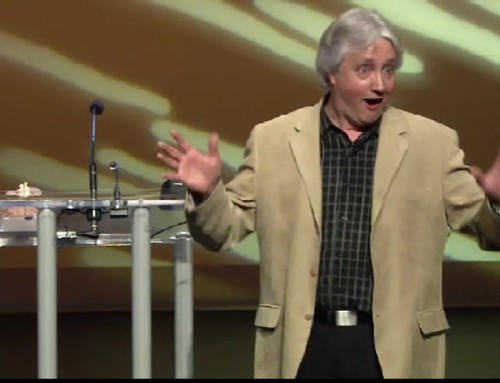 Involving your audience by being enthusiastic is a great way to satisfy them. The Greek en theos, meaning “god within,” gives the root for the word enthusiasm.
Involving your audience by being enthusiastic is a great way to satisfy them. The Greek en theos, meaning “god within,” gives the root for the word enthusiasm.
An enthusiastic person has a special, almost spiritual quality of excited involvement in things. Enthusiasm not only stems from having strong convictions but from a kind of joy for living. And enthusiasm is free! It’s within every one of us.
Of course various speakers are capable of varying levels of enthusiasm, and different speaking situations call for different approaches.
Enthusiasm is much more than talking loud and fast. It is letting some of that god-like spirit within you come out in the form of movement, gestures, and vocal variety. (Some speakers even have enthusiastic eyes.) As a result, your audience will know that you are interested in what you have to say. Chances are they will be too.
There are many ways to show your enthusiasm. Two of the most important are by:
1–Varying Your Voice
Your inner convictions about a topic may soar above the clouds but your audience won’t believe it if your voice stays on the ground. Vary the power, pitch and speed of your words. This doesn’t mean you should sound like a hyped-up fitness guru selling his latest product on an infomercial. No, that will only annoy your audience. But you do need to let people hear some energy in your words.
2–Moving When You Speak
Tradition says presenters should always be rooted to one spot when they speak. Well, tradition is wrong! To make emotional contact with our listeners, we need to convey excitement and confidence when we speak. That means we’ve got to move! Motion is visual! Motion is energetic! How can we expect to move people to action when we are standing still?
When speaking before large groups, get from behind the lectern. Bert Decker in You’ve Got To Be Believed To Be Heard refers to the lectern as an eight-ball. He warns speakers not to get “trapped behind it.” He goes on to say, “Get rid of physical barriers between yourself and your audience.
On a platform and in meetings get out from behind the lectern so you can gesture with your hands and arms. If you’re in a seated situation, consider standing— or even getting out of your chair and walking around when it’s your turn to speak. If that’s not appropriate, lean forward to give yourself more impact. Just make sure you move as you speak.”
Can you show too much enthusiasm? Sure. If it’s fake. Soaring enthusiasm must have a sturdy base of substance. Fervor, even frenzy, is okay as long as the audience doesn’t sense it’s all “an act”— a charade artfully crafted to deceive. You, the presenter, can be just as emotional as your feelings impel you to be as long as there is a solid core of conviction at the center of what you’re saying.
What about times when you don’t feel good or are depressed? You should still try to show enthusiasm. This is not the same thing as putting on a charade to deceive your audience. Rather it is proof you are a professional who is determined to give the best presentation he can. William James, the Harvard psychologist, suggested that you feel the way you act. Therefore, enthusiasm works like this: If you are going to feel enthusiastic, you must be enthusiastic. Does it work? Try it a few times and find out.
A Stanford University study showed that only 15 percent of success in sales presentations was due to knowledge, whereas 85 percent was from enthusiasm. So, if you want your next speech, safety meeting or training session to be a success be enthusiastic!
‘till next time.
Richard





